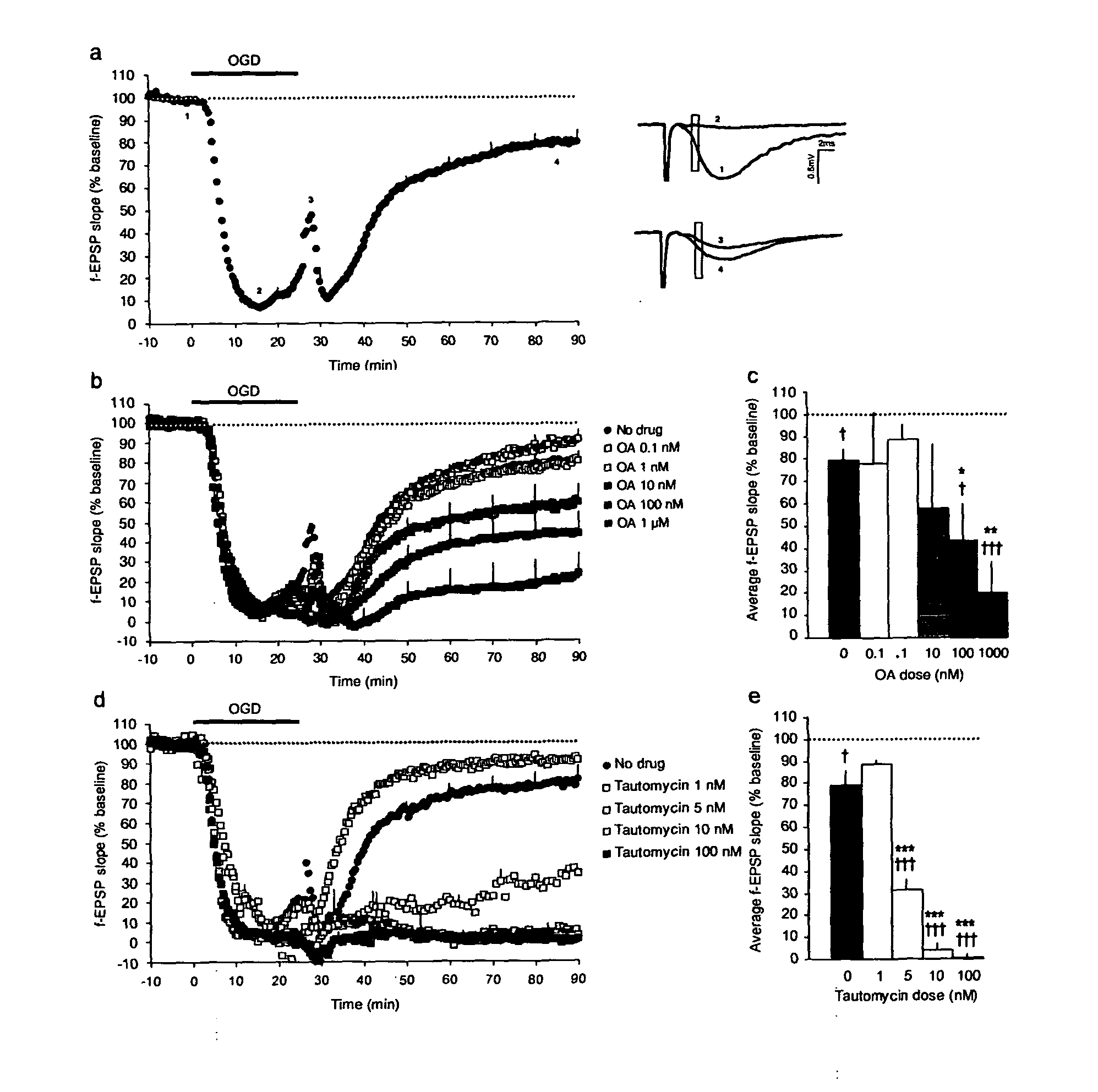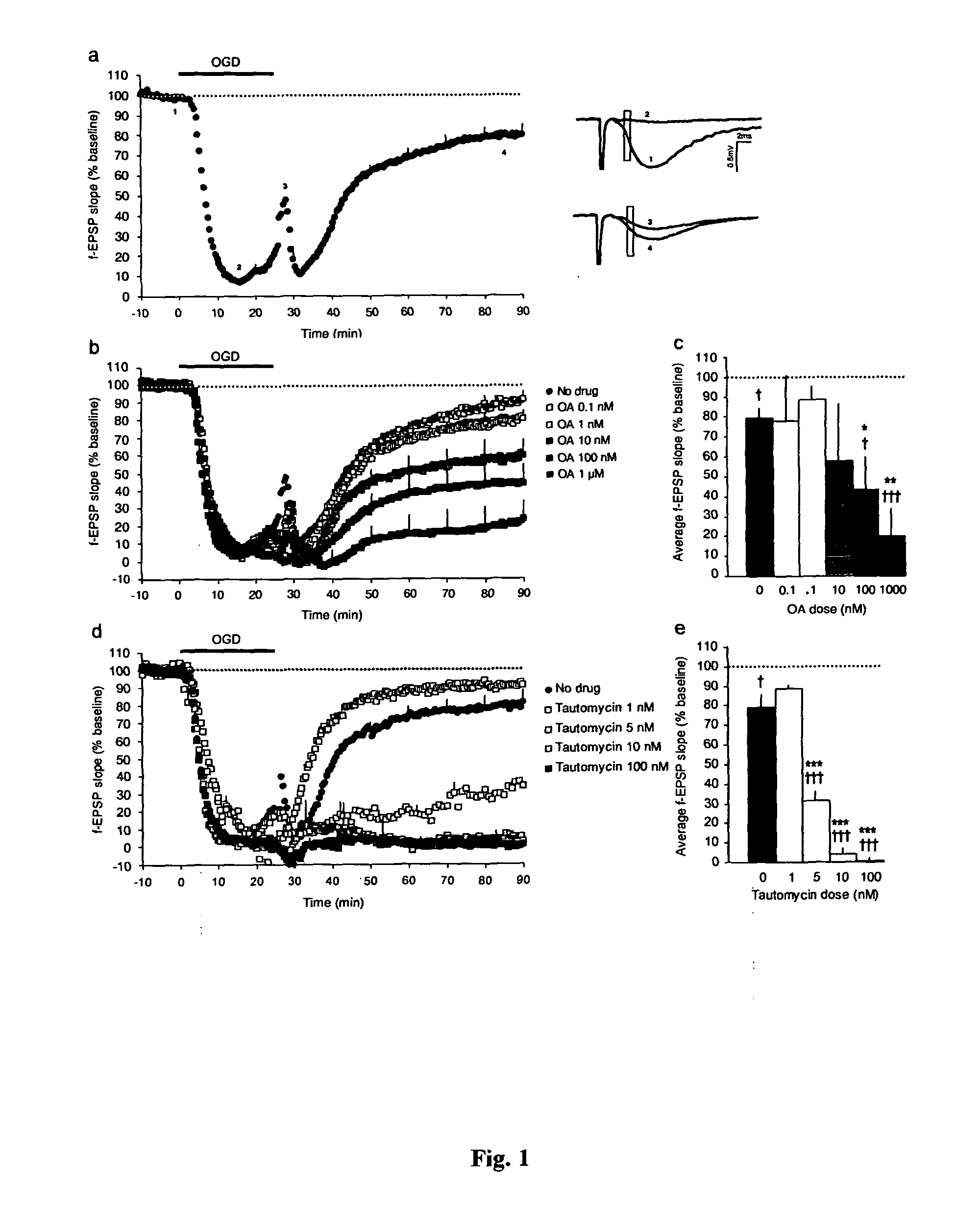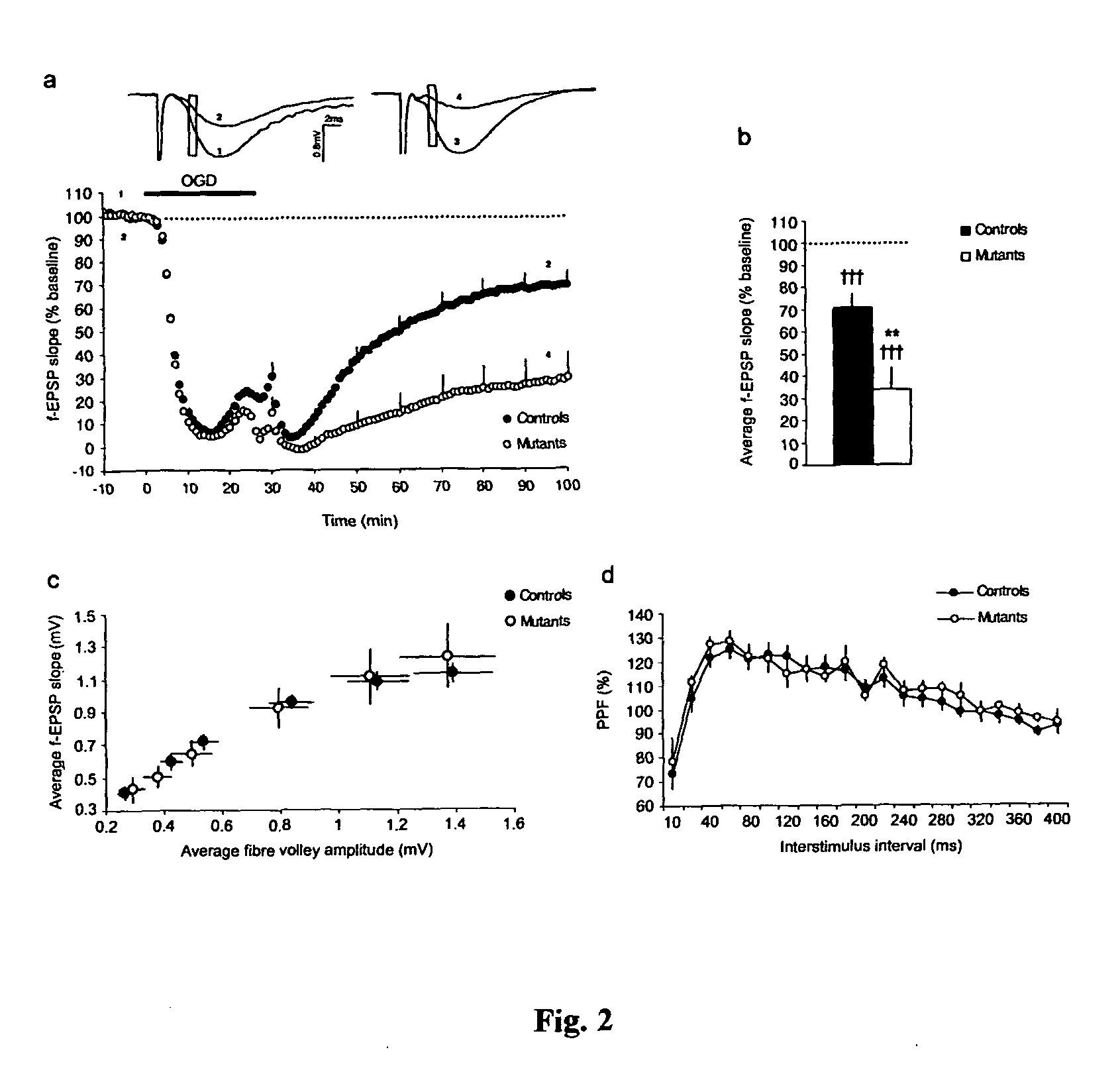Method of preventing and treating acute brain pathologies
a brain pathology and acute treatment technology, applied in the field of methods, can solve the problems of affecting brain regions, affecting the function of the brain, and often irreversibly injured brain regions, and achieve the effects of long-lasting functional impairment, and preventing and treating acute brain pathologies
- Summary
- Abstract
- Description
- Claims
- Application Information
AI Technical Summary
Benefits of technology
Problems solved by technology
Method used
Image
Examples
example 1
Pharmacological Inhibition of PP1 Reduces Recovery from OGD in Acute Hippocampal Slices
[0078]To model conditions of transient cerebral ischemia in vitro, acute hippocampal slices were subjected to 25 min OGD, and the effect of OGD was evaluated by recording evoked field excitatory postsynaptic potentials (f-EPSP) in area CA1 (Lobner and Lipton, 1993; Raley-Susman and Lipton, 1990). OGD induced a rapid decline in the slope and amplitude of the evoked f-EPSP followed by a partial recovery and stabilization of the f-EPSP to a level that was significantly lower than prior to OGD (f-EPSP slope: 79.2±4.9% of pre-OGD baseline 80-90 min after OGD onset, n=10, unpaired t-test: t20=5.6, pa). The involvement of PP1 in f-EPSP recovery after transient OGD was examined by testing the effect of okadaic acid (OA), a natural toxin that inhibits PP1 and PP2A with different efficacy (IC50 for PP1: 20-100 nM; for PP2A: 0.1-1 nM (Cohen et al., 1990)). Graded doses of OA were used to inhibit both PP1 and...
example 2
Genetic Inhibition of PP1 Reduces f-EPSP Recovery after OGD
[0079]To confirm that PP1 inhibition is responsible for the reduced f-EPSP recovery after transient OGD, a genetic approach was used to specifically inhibit PP1 in the adult brain. Hippocampal slices from transgenic mice expressing a constitutively active form of the PP1 inhibitor, inhibitor-1 (I-1*) (Genoux et al., 2002) selectively in forebrain neurons were prepared and subjected to OGD. In these mice, I-1* expression in neuronal cells leads to partial inhibition of PP1 (67.7±12% (Genoux et al., 2002)) in the hippocampus. I-1*-mediated PP1 inhibition significantly reduced f-EPSP recovery such as f-EPSP slope recovered to only 34.2±9.7% of baseline 90 min after the onset of OGD compared to 71.3±5.8% in control slices (mean effect of genotype F(1, 28)=11.81, pa, b). The degree of recovery in the mutant slices was comparable to that in control slices treated with 100 nM-1 μM OA (FIG. 1b, c) or 3 nM tautomycin (FIG. 1d, e), su...
example 3
The Induction of LTP Prior to OGD Mimics the Effect of PP1 Inhibition
[0080]Signaling cascades involving the Ser / Thr protein phosphatases PP1, PP2A and CN are known to be modulated by synaptic plasticity. In particular, LTP and LTD, two major forms of synaptic plasticity in the hippocampus, are accompanied by opposite regulation of phosphatase activity. Both PP1 and PP2A were reported to be inhibited shortly after the induction of LTP but, while PP1 activity fully recovers after about 30 minutes, PP2A activity remains suppressed (Blitzer et al., 1998; Brown et al., 2000; Fukunaga et al., 2000; Morishita et al., 2001; Thiels et al., 1998; Winder and Sweatt, 2001). In contrast, CN is activated after the induction of LTP (Lu et al., 2000; Winder and Sweatt, 2001). Advantage of these features was taken to differentially modulate phosphatase activity by inducing LTP or LTD prior to OGD. First it was tested whether LTP can alter recovery by stimulating Schaffer collaterals with high freque...
PUM
| Property | Measurement | Unit |
|---|---|---|
| frequency | aaaaa | aaaaa |
| body weight | aaaaa | aaaaa |
| temperature | aaaaa | aaaaa |
Abstract
Description
Claims
Application Information
 Login to View More
Login to View More - Generate Ideas
- Intellectual Property
- Life Sciences
- Materials
- Tech Scout
- Unparalleled Data Quality
- Higher Quality Content
- 60% Fewer Hallucinations
Browse by: Latest US Patents, China's latest patents, Technical Efficacy Thesaurus, Application Domain, Technology Topic, Popular Technical Reports.
© 2025 PatSnap. All rights reserved.Legal|Privacy policy|Modern Slavery Act Transparency Statement|Sitemap|About US| Contact US: help@patsnap.com



